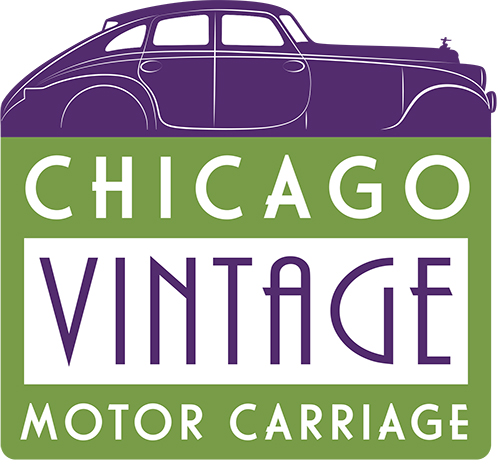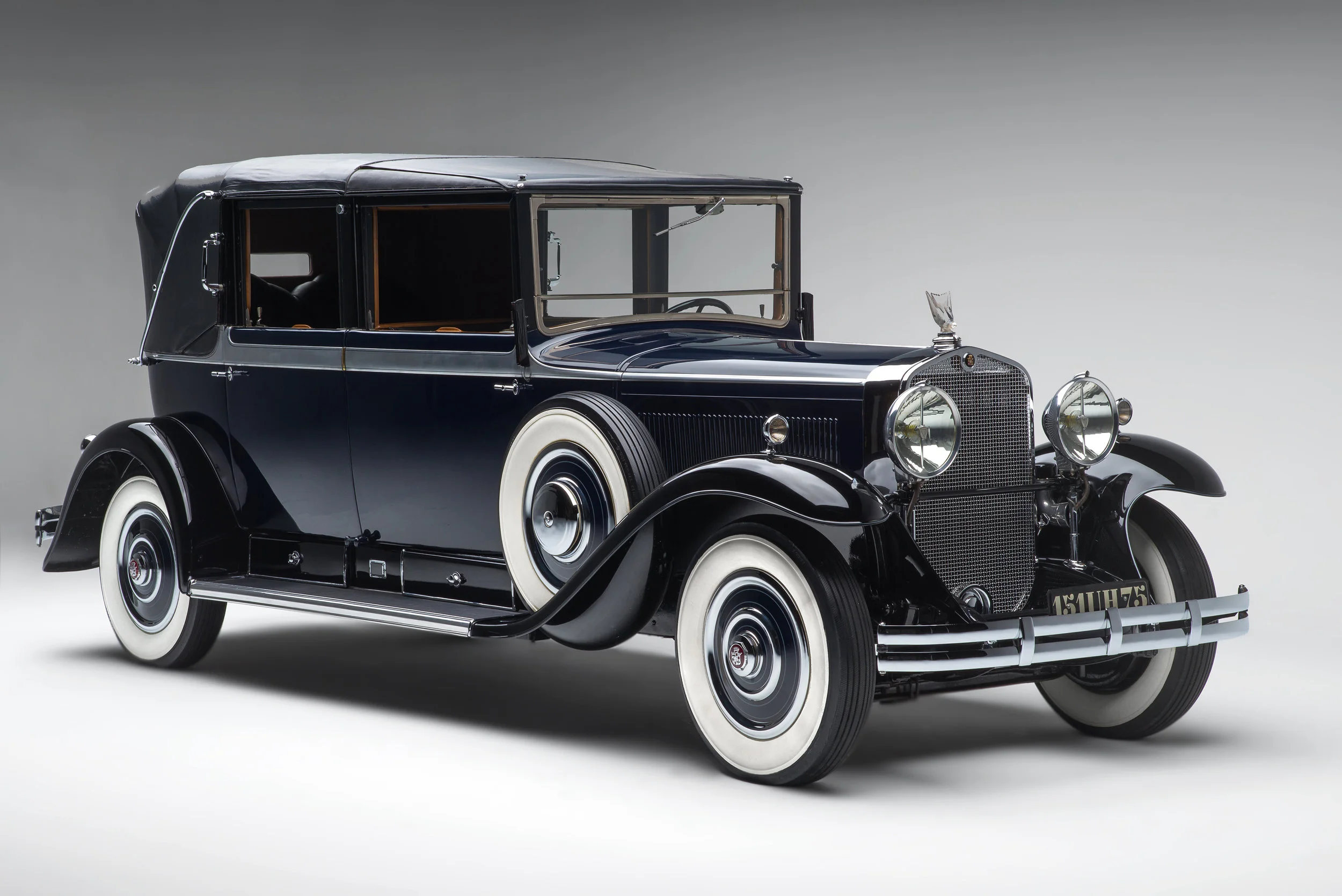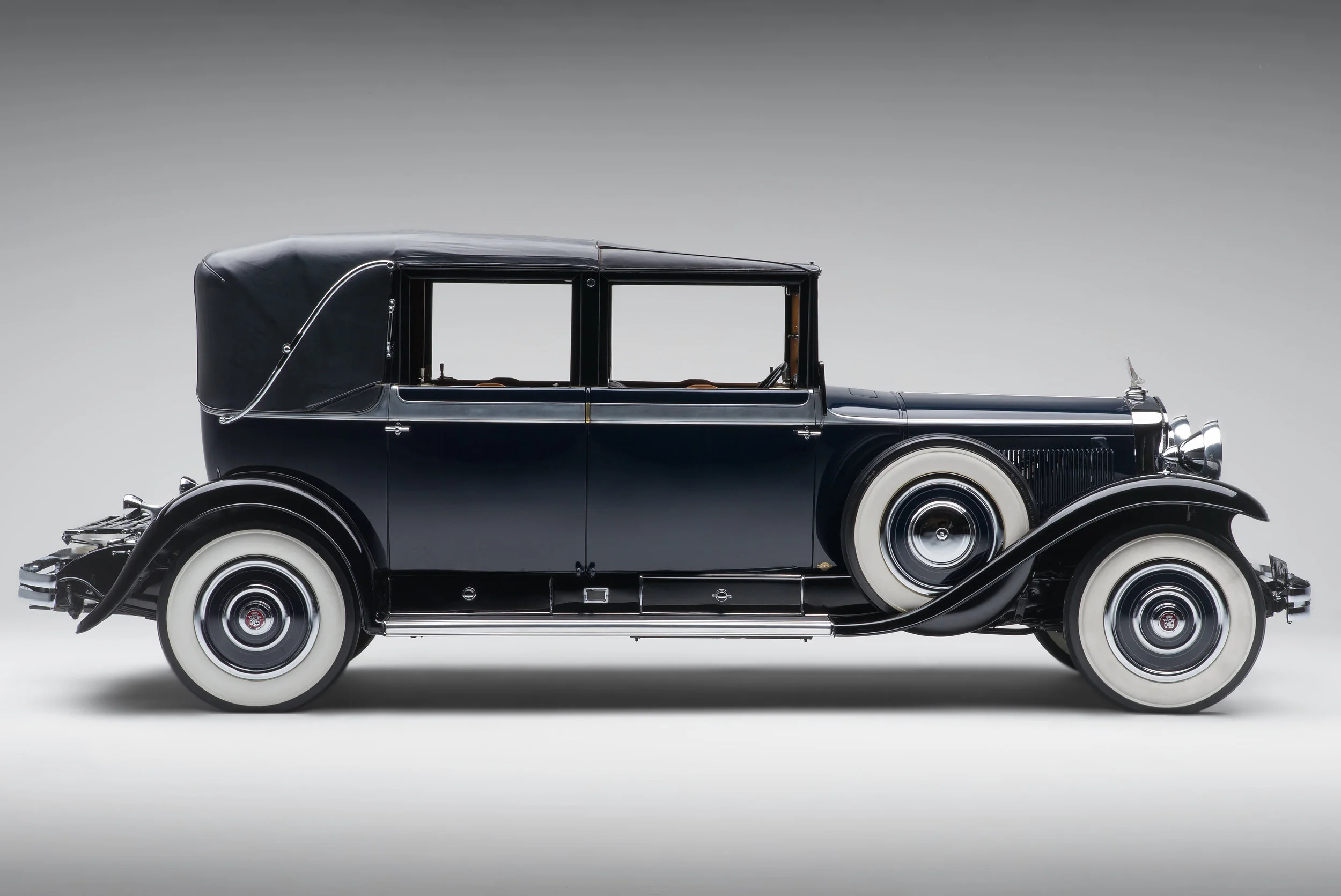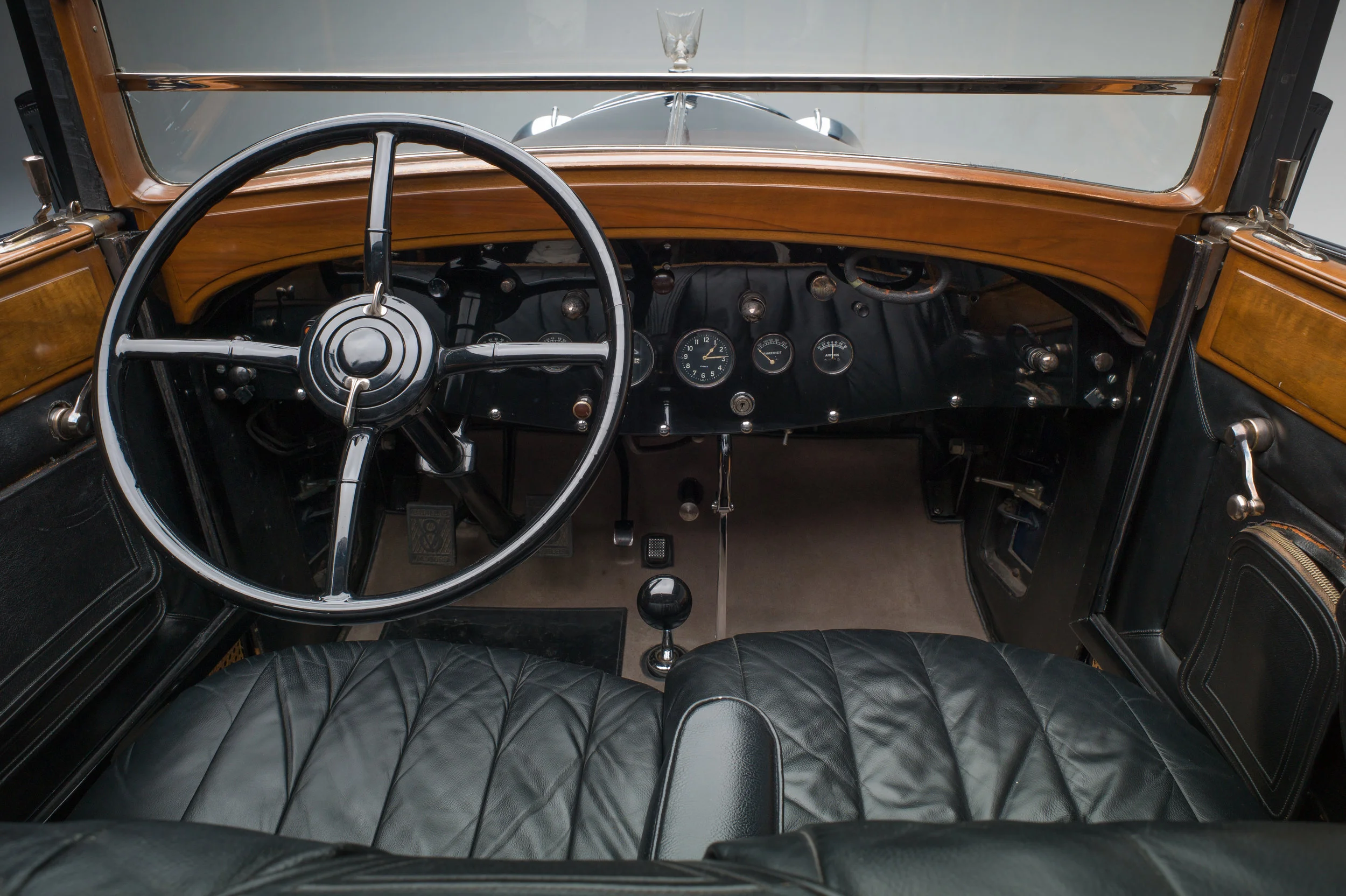1930 Cadillac Kellner Bodied Open Front Town Car
1930 Cadillac Kellner Bodied Open Front Town Car
It’s hard to imagine a less well-timed introduction of a new model year’s cars than Cadillac’s announcement of their 1930 models. Prices were official as of September 16, 1929, two days before the first series of stock market jolts that culminated in October’s Black Monday. At least those prices were lower than the 1929 models, thanks to rationalization of production with LaSalle, the new Cadillac 353 V-8 sharing a new, larger engine architecture with LaSalle.
YEAR & MAKE - 1930 Cadillac
SERIES - 353
BODY TYPE - 4 Door, 5 Passenger 3 Position Convertible Sedan
BODY BY - Kellner
# CYLS. - V8
TRANSMISSION TYPE & NUMBER - 3 Speed, Synchromesh Twin Disc Clutch, RWD
WEIGHT - 6,000 lbs
ESTIMATED PRODUCTION - 1
HP - 96
C.I.D. - 353
WHEELBASE - 153″
PRICE NEW - $4,845
The 1930 Cadillac was easily recognizable to anyone who knew the ‘29, as Cadillac intended. Nevertheless, numerous subtle changes did indeed make it a new car, including small Cadillac’s 134-inch wheelbase shared with LaSalle, and of course the 353.3-cu.in. V-8. With an increased 3.375-inch bore, improved combustion chambers and larger exhaust valves, the V-8 produced approximately 95hp at 2,900 RPM, and 224-lbs.ft. of torque at only 1,000 RPM. Throughout the car, from the felt lining of the air intake to new tape between metal and wood body parts, Cadillac went to extraordinary lengths to ensure smooth and quiet operation. Visually, ‘30 Cadillacs could be distinguished by new V-16-style full-length engine compartment louvres, as well as lower runningboards and an overall lower height. Interiors were a model of simplicity, featuring new instruments, and prewiring for a radio in closed cars. The lineup was consolidated somewhat for 1930, with seven catalog Fisher bodies, and 14 Fleetwood built-to-order types, which could further be broken down into more than three dozen distinct bodies. But for discerning customers, chassis were available without a factory body for full custom coachbuilt cars. These were much more likely to be the V-16, but even then, less than 1% were bodied by anyone other Fleetwood or Fisher. The number of custom-bodied V-8s was likely an infinitesimal fraction of the 14,995 cars sold, although with a V-8 available on a 152-inch commercial chassis, there are probably a handful of coachbuilt V-8s not accounted for in the production numbers. Cadillac had a long history in Europe, and Parisian coachbuilder Georges Kellner et Fils prepared this aluminum-bodied, long-wheelbase three-position double cabriolet for famed banker Baron Edmond James de Rothschild. As later owner James “Jimmy” Leake told Cadillac historian Yann Saunders, “It is not a landaulet; it is what I call a double cabriolet, that is a closed car, a Sedanca de Ville as well as an open tourer.” After Third Baron Edmond Rothschild’s death in 1934, the car was largely stored and used occasionally at one of the two Châteaus Rothschild for special occasions such as weddings, before being purchased by Mr. Leake in 1969. Mr. Leake exhibited it in his private museum intermittently, and it was subsequently acquired by the Imperial Palace collection in 1985, via Russ Jackson of Barrett-Jackson fame. After a brief period in the Blackhawk Collection, it was purchased by Chicago Vintage from Kruse in Las Vegas in 1998. It is the only Kellner-bodied Cadillac known to exist, and was last shown in public in June 2014 at the Elegance Hershey.






